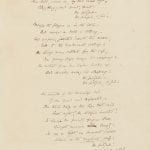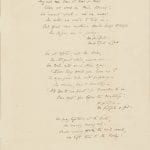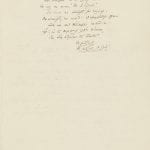
III: Liturgy, Lamentation, and a Prayerful Precedent
Upon first glance The Cry of the Children may appear as if, in the midst of such abuse, Elizabeth Barrett Browning scorning Christianity altogether. Read stanza 11 (located below). What impression do you get of Browning’s religious views from these lines?
XI
“But, no !” say the children, weeping faster,
” He is speechless as a stone ;
And they tell us, of His image is the master
Who commands us to work on.
Go to ! ” say the children,—”up in Heaven,
Dark, wheel-like, turning clouds are all we find !
Do not mock us ; grief has made us unbelieving —
We look up for God, but tears have made us blind.”
Do ye hear the children weeping and disproving,
O my brothers, what ye preach ?
For God’s possible is taught by His world’s loving —
And the children doubt of each.
A closer look at the poem alongside her earlier publication, The Cry of the Human, indicates EBB’s frustration, not with Christianity itself, but with the church’s failure to act in line with sound theology. The intercessory style of this earlier poem enables readers to rightly understand her religious commentary in The Cry of the Children. From beginning to end, EBB concludes every stanza in The Cry of the Human with the refrain “Be pitiful, O God.” At the time of its publication, readers would have recognized this phrase from The Book of Common Prayer, the official service book of the Church of England. A very similar refrain—“have mercy upon us, O Lord”— laces “The Litany.” Could this be an interesting coincidence or a pointed means of getting the church’s attention?
EBB’s The Cry of the Human, manuscript courtesy of Armstrong Browning Library
By echoing this plea, EBB presents the poem as a pertinent prayer for her time. It demonstrates her own spiritual devotion and clarifies her critical stance in The Cry of the Children. Look back at stanza 11 in The Cry of the Children. There EBB reproves the way the church recommends prayer without physically addressing the social ills themselves. She affirms in line 135, “God’s possible is taught by His world’s loving,” revealing her conviction that faith and action must go hand in hand. Read together, these poems express Browning’s view at while intercessory prayer is necessary, it is not an excuse for inaction.
Text of “The Litany”
Post created by Mary Catherine Montgomery





